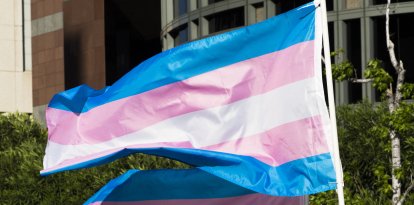An 11-year-old girl finds the bone of what could be the largest known marine reptile
The fossil, found in Somerset in May 2020, belonged to a type of Ichthyosaur or lizard fish, which inhabited the Earth more than 200 million years ago.

(Cordon Press)
An 11-year-old girl and her father found the bone of what could be the largest known marine reptile on the planet. The bone, found in Somerset (United Kingdom) in May 2020, belongs to a type of Ichthyosaur or lizard fish, an animal that inhabited the Earth more than 200 million years ago. The bone is part of the reptile's jaw and is more than two meters long. This would make the remains of the blue whale the second largest in the world.
Several experts told Sky News that the prehistoric reptile was over 25 meters long, making it likely the largest marine reptile ever recorded. The discovery of the rest, however, was not entirely planned and could be defined as a chance find.
Justin and his 11-year-old daughter, Ruby Reynolds, were looking for fossils on Blue Anchor Beach in England when Ruby saw the first piece of bone, CNN reported. After this, they both began to search and they found the additional pieces together until October 2022, when they located the last remains of the giant jaw.
The Ichthyosaur bone was decisive for Paul de la Salle's research
They didn't do it alone. Once they realized that their find could be important, they contacted Dr. Dean Lomax, a paleontologist at the University of Manchester, who put them in touch with Paul de la Salle, a fossil collector who had found the first giant jaw in May 2016. Paul de la Salle spoke with CNN about what it meant to him to be able to participate in this second scientific discovery:
Justin Reynolds was also excited about the discovery he made with his daughter Ruby. In a statement obtained by the television network, the proud father said that he was thrilled to be able to collaborate with Paul de la Salle's discovery:

























